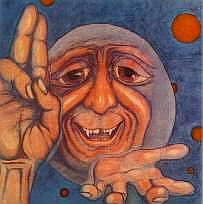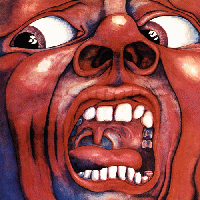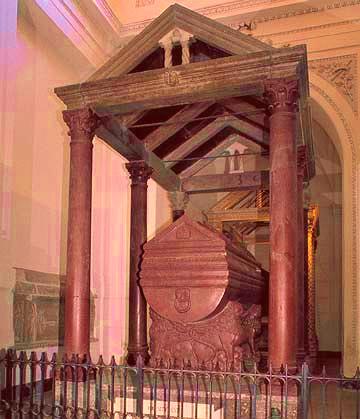IN THE COURT OF THE CRIMSON KING
- chapter index -
pg. 1 - Epitaph | pg. 2 - The Iron Gates of Fate
pg. 3 - The Fate of All Mankind | pg. 4 - Moonchild
pg. 5 - The Court of the Crimson King | pg. 6 - The Purple Piper
pg. 7 - Averroes | pg. 8 - The Keeper of the City Keys
pg. 9 - The Pilgrim's Door | pg. 10 - The Return of the Fire Witch
pg. 11 - The Gardener Plants An Evergreen | pg. 12 - The Prism Ship
pg. 13 - The Grinding Wheel | pg. 14 - On Soft Gray Mornings
pg. 15 - Divining Signs | pg. 16 - The Yellow Jester
pg. 17 - Remember the Future | pg. 18 - The Return of the King
pg. 19 - The I Ching | pg. 20 - Octants
site index
Translate from
|
But gently pulls the strings. He smiles as the puppets dance In the court of the crimson king. " The first court jesters appeared in Europe in 1202. - The Timetables of History by Bernard Grun "He was wont at times to make mocking harangues before his court in his own palace. "Moreover, he would suffer patiently the scoffings, and mockings and revilings of jesters, and often feign that he heard not. For one day, after the destruction of Victoria by the men of Parma, he smote his hand on the hump of a certain jester, saying 'My Lord Dallio, when shall this box be opened?' to whom the other answered, ' 'Tis odds if it be ever opened now, for I lost the key in Victoria.' The Emperor, hearing how this jester recalled his own sorrow and shame, groaned and said, with the Psalmist, 'I was troubled, and I spoke not.'" - Salimbene/From G. G. Coulton, St. Francis to Dante, (London: David Nutt, 1906), pp. 242-43 "Fate itself seemed to walk the earth in this Hohenstaufen, not sinister or menacing but smiling, innocently playful, with buoyant dancing step. 
In later years this fateful quality assumed terrifying proportions, the smile became a cynical witticism, the dance a dance of death." - Frederick II by Ernst Kantorowicz (p. 102) "No matter where; of comfort no man speak: Let's talk of graves, of worms, and epitaphs; Make dust our paper and with rainy eyes Write sorrow on the bosom of the earth, Let's choose executors and talk of wills: And yet not so, for what can we bequeath Save our deposed bodies to the ground? Our lands, our lives and all are Bolingbroke's, And nothing can we call our own but death And that small model of the barren earth Which serves as paste and cover to our bones. For God's sake, let us sit upon the ground And tell sad stories of the death of kings; How some have been deposed; some slain in war, Some haunted by the ghosts they have deposed; Some poison'd by their wives: some sleeping kill'd; All murder'd: for within the hollow crown That rounds the mortal temples of a king Keeps Death his court and there the antic sits, Scoffing his state and grinning at his pomp, Allowing him a breath, a little scene, To monarchize, be fear'd and kill with looks, Infusing him with self and vain conceit, As if this flesh which walls about our life, Were brass impregnable, and humour'd thus Comes at the last and with a little pin Bores through his castle wall, and farewell king!" - - William Shakespeare, King Richard II "Death keeps his court within the empty crown that encircles a kingís vulnerable/venerable head ("mortal" means dying; "temple" puns on the fact that a king is like a sacred building). There Death sits enthroned like a grotesque jester, scoffing at the kingís show of magnificence and grinning at his regal ceremony. (Like a puppet-master,) Death grants the king a momentary breathing space to play the monarch and condemn others to die by his mere glance. Death infuses in the king a vain conceit of his power, making him think his mortal flesh is an impregnable wall of brass protecting the life within it. When Death has thus amused himself (or when Death has thus indulged the king; or while the king is in this smug mood), he besieges the castle and bores through its wall (the kingís flesh) with a little pin (some disease? or some trivial but unperceived cause of death?)óand thatís the end of the king!" - Paraphrase of Richard II 3.2.160ñ77 When the news reached Rome, Pope Innocent IV was delighted. 'Let heaven exult and the earth rejoice,' he proclaimed in a message to the Sicilian bishops and people. One of his chaplains, Nicholas of Carbio, went further. God, he wrote, seeing the desperate danger in which the storm-tossed 'bark of Peter' stood, snatched away 'the tyrant and son of Satan,' who 'died horribly, deposed and excommunicated, suffering excruciatingly from dysentery, gnashing his teeth, frothing at the mouth and screamingÖ'. " - Death of Emperor Frederick II by Richard Cavendish 
"Legend also associated Frederick's palace of retreat with Mount Etna believed to be the seat of Satan's empire. A Minorite brother, while at prayer in Sicily, reported that he had seen an army of 5,000 horsemen riding into the sea, whereupon, as if these troops were clothed in red-hot armour, a hissing sound arose from the water. One of these horsemen, the leader, was identified in the hallucination of this visionary friar as none other than Frederick II, 'for it was at this moment that Frederick died."(p.528-9) - The Emperor Frederick II von Hohenstaufen Immutator Mundi by Thomas Curtis Van Cleve "Frederick had passed away in the full glory of imperial power. The faithful hailed him as the vas electum Dei . . . 'overcome by the might of God alone whom the might of the children of men had not availed to overcome' . . . 'the unconquered' . . . 'the mightiest of heroes' . . . 'the greatest of the princes of the earth, the admiration of the world and her most marvelous tansformer.' Frederick suffered no martyrdom, nor bore the wounds St. Francis bore. The last Emperor of the Romans disappeared from amidst his followers in the radiant glory of the Imperator Invictus, and was spared the knowledge of the tragic fate that overhung his house." - Frederick II by Ernst Kantorowicz (p. 685) The life of a man resembles the trajectory of the sun, rising, reaching a high point and then declining and setting. Frederick II was certainly no exception to this. In fact, he was the sun. Upon his death his son, Manfred, wrote: "The son of justice has set, the maker of peace has passed away."
The yellow jester represents the alchemical "Yellowing", only in reverse. It is not the sun rising, but setting, Frederick II and his empire in decline. ""...and as the solar disk appears over the horizon we enter the Citrinitas (Yellowing), in which the prime matter is ennobled. When the sun reaches the zenith, the Rubedo (Reddening) is achieved, which is the highest state." - The Pythagorean Tarot by John Opsopaus The jester symbolizes the decline and death of Frederick and his dynastic line. Particularly because he thinks of himself as the God-emperor, his failures mock him. The jester does not play because death and deterioration are inevitable and no action is required to bring them about. In his last days, Frederick II was bitter, distrustful and isolated. His contention that the yellow jester "pulls the strings and smiles as the puppets dance" expresses his growing paranoia and madness. "Frederick was surrounded by disloyalty, treachery, plots and conspiracies." - The Holy Roman Empire by Friedrich Heer (p. 83) "Excommunicated, outlawed - killing Frederick II was not only permissible but a Christian duty - proclaimed as anti-Christ by papal emissaries up and down Italy, battling his way from one place to the next, harassed by traitors and would-be assassins, often defeated, briefly victorious, the Emperor died exhausted in 1250. This was the end of an epoch in world history. In Germany the Holy Roman Empire collapsed in a welter of civil war: the time of terror had come, the age without an Emperor." - The Medieval World by Friedrich Heer In the early verses of the song, Frederick sees himself as the alchemical Sulphur that will change the world. In terms of the Sun and Moon Tarot cards, In the Court of the Crimson King is meant to represent the culmination of the alchemical opus, or Great Work. But, because the song is an intensely biographical rendering of the life of Frederick II, Peter Sinfield is also portraying Frederick II as the earthly embodiment of the Magnum Opus, the sun at it's zenith. - Frederick II by Ernst Kantorowicz (p. 685)
Cathedral of Palermo "East meets West in this cathedral, a curious spectacle. It was built in the 12th century on the foundation of an earlier basilica the Arabs had converted into a mosque. The pantheon of royal tombs includes that of the Holy Roman Emperor Frederick II, in red porphyry under a canopy of marble." - Il Duomo, Frommer's |
|
|
return to chapter & page index  |
|
Sign
the Dreambook
![]() Read
the Dreambook
Read
the Dreambook

|

|

|

|

|

|

|

|

|

|

|

|

|

|

|

|
 |
 |
 |
 |
 |
|
| Works |
Lyrics
& Poems |
Gallery |
Guestbook
Archive |
Links | Discography |
E-mail:
Peter Sinfield Jon Green |
Page One |

Return to the Song Soup On Sea Homepage
These Pages Created and Maintained using
 Arachnophilia
Arachnophilia
Copyright © 1998 - 2001 ~ Jon Green /All rights reserved
